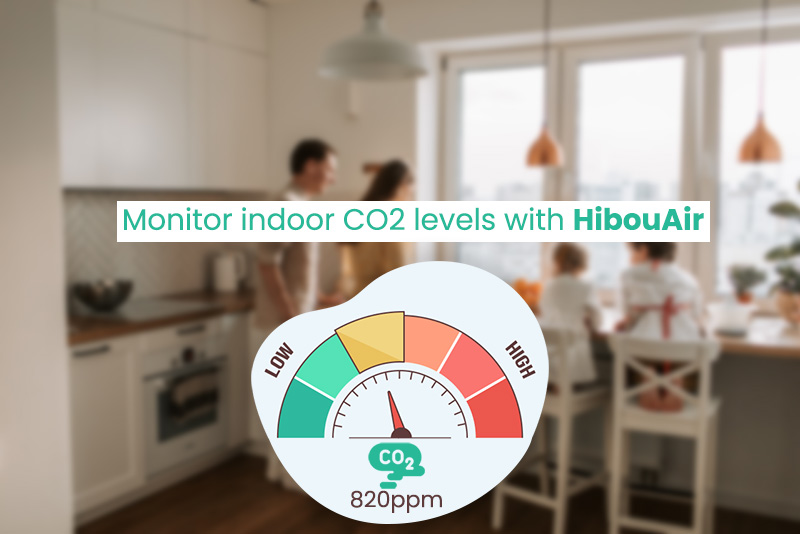The measurement of co2 as an indicator of air quality
June 28, 2022
What is carbon dioxide (CO2) and where is it found?
Composed of one carbon atom and two oxygen atoms (CO2), carbon dioxide is a colourless gas of natural origin that appears in the atmosphere as a trace gas (that is, it occupies a volume of less than 1% of the total atmospheric ). It is a pillar in the terrestrial life cycle and plays a significant role in controlling the planet’s climate.
Carbon dioxide is caused by natural geothermal and biogeochemical phenomena that include the respiration of living things and their decomposition. It is also generated artificially by various human activities and industries, as well as the burning of fossil fuels, natural gas, and coal. And, with them, their concentration in the atmosphere is increasing.
The effects of CO2 on humans
In normal concentrations, carbon dioxide is generally not a toxic gas for people. Although it is exhaled in the breath, it is a necessary gas for life that is diffused throughout the body and that assists in many physiological functions, such as haemoglobin. However, when CO2 is found in higher concentrations in environments, it can become a gas that is harmful to humans.
CO2 is expressed in ppm (parts per million), and a limit value of 1000 ppm is recommended for a healthy indoor climate. Above 1200 ppm, the indoor climate is unhealthy and ventilation is required immediately. Air humidity is also important. Air that is too dry irritates the respiratory tract, and air that is too humid can cause mould. Air humidity is expressed in RH (relative humidity), it is recommended to seek a percentage of humidity between 40% and 60%.
An unhealthy indoor climate can cause the following health problems:
- Headaches, fatigue, and drowsiness (which often increase during the day);
- Mucosal irritations and other non-specific discomforts;
- Communication of infectious diseases that leads to an increase in sick leave;
- Increased incidence of allergies;
- Increased risk of asthma attacks.
THE MEASUREMENT OF CO2 AS AN INDICATOR OF AIR QUALITY
The correct ventilation of indoor or closed environments is essential to control possible exposures to respiratory viruses – among them, the cause of the COVID-19 pandemic. But how to ensure that the environments we occupy are properly ventilated or maintain air circulation and purification systems that protect us?
Being produced naturally by people, closed or poorly ventilated environments will always have higher concentrations of particles and gases such as CO2 than those with adequate air flows. And it is environments with little ventilation in which the effects of poor air quality, in addition to a possible source of contagion, are found.
Since CO2 is the gas that is most abundantly produced by the respiratory process, gas and particle concentration meters have become a fundamental tool for health care.
These air quality monitors take a sample of the air in environments to provide certainty about the ppm values of carbon dioxide and other particles found in them. Air quality monitors allow us to understand exactly if space is safe and healthy, or not.
Monitor CO2 levels with HibouAir
In the personal and specific environment for shared indoor environments, keeping an eye on carbon dioxide concentrations is essential to take ventilation and correction actions, and take care of ourselves. To do this, it is recommended to have a monitor that can monitor air concentrations, provide intelligent information to improve decision-making, and help take quick action in controlled environments to create conditions for a healthy and productive workplace or home.
Incorporating all these functions; the HibouAir is the most accurate air quality monitor in its category.
It enables intelligent and remote monitoring for homes or offices.
Order NowSources:
https://www.co2.earth/daily-co2https://www.bbc.co.uk/bitesize/topics/z3fv4wx/articles/zndkxyc
Facebook Twitter LinkedIn